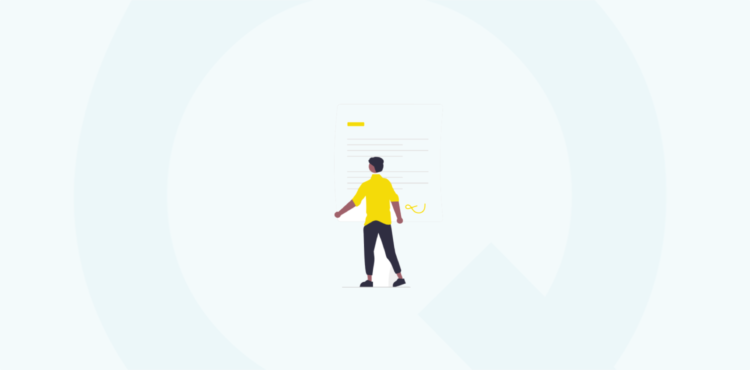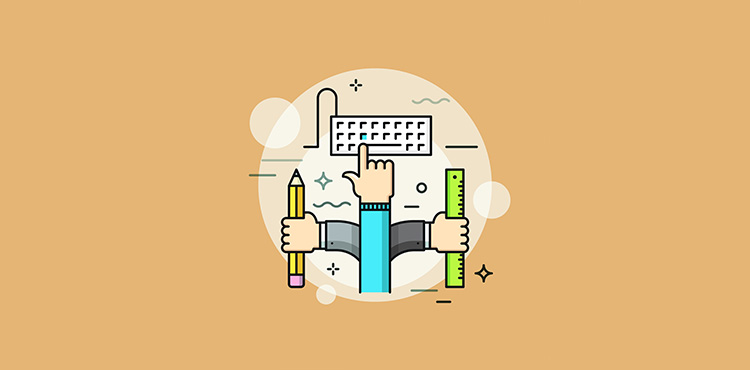Workplaces have sort of become a modern place of worship with strict rules and etiquette that are passed down from generations of the past. We explain why that’s not always best.
Some of these etiquettes are cumbersome and do not foster productivity and creativity but are nevertheless adhered to simply because not doing so would be considered a violation of workplace mannerisms.
During a Zoom meeting, you must have stared at your own face–if you’ve not disabled your camera, that is–more than the speaker’s (it’s alright, we all do), or poured all your attention on someone else’s face, and not paying much, or any, to whom it’s due.
Or maybe you’re scrolling through a co-worker’s social media feed. Or perhaps just reading an interesting Wikipedia article that has nothing to do with work. All these are instances of cyberloafing, a term for wasting time on the internet during office hours and mindlessly surfing the web instead of doing one’s job–to which it may be added: while pretending to be working.
Cyberloafing is considered a great sin in the corporate world. It is estimated that employees spend up to 2 hours each day engaging in cyberloafing activities at work, costing organisations as much as $85 billion per year. But there’s more than meets the eye.
Contrary to commonly held beliefs, there is evidence to suggest that cyberloafing does not negatively affect employees’ productivity and performance. Some research even suggests that cyberloafing might have positive impacts such as elevating employees’ moods and increasing employee work engagement.
But alas, we shan’t be slacking and must appear to be engaged and dedicated at all times. “Damn what research says, and damn modest increase in productivity. We must honour the time-tested behaviours and etiquette and stick with them because we can’t risk falling over the cliff.”
So mumble in unison the bosses and the toadies alike. And the bosses continue to surveil employees while the employees continue their loafing, clandestinely.

Most workplace etiquettes are vestiges of the past and are no longer suitable for the modern work environment, if they ever were suitable. And yet most of them are still followed religiously as though non-adherence is sacrilegious, to the detriment of both productivity and the person.
It is time that we forswear certain entrenched workplace practices. A rigid and constricted environment doesn’t foster creativity but instead numbs the mind and stifles growth, be the constraints psychological or physical, explicitly enforced or tacitly accepted.
So below are five behaviours that are conventionally frowned upon at work but are actually beneficial and should be encouraged, if followed in moderation.
Loafing
Loafing–or to put in a less technical term, idling away one’s time mindlessly–is perceived as a drain on productivity, and worse, a form of mini AWOL. A loafer is judged to be present at work in body but not in spirit. But loafing can be a form of work, too, although it doesn’t seem like it, just as certain activities that seem like work aren’t, such as staring at an empty spreadsheet.
Loafing can be useful. Letting the mind wander–daydreaming, in other words–is not just part of being human; it can also be a source of creativity, a way to unlock solutions to intractable and thorny problems.
“Daydreaming can have significant upsides for one’s tendency to crack difficult challenges in new ways,” said Markus Baer, professor of Organisational Behaviour at the Olin Business School, Washington University in St. Louis. “This, however, presumes that people deeply care about the work they do, what attracted them to the profession in the first place.
Daydreaming without this focus has significant downsides, which show up most directly in one’s overall performance ratings.”
Loafing and daydreaming can boost creativity but do not much come in the way of killing it–whether one does so to crack a nutty problem or to mentally escape from work for a brief while.
Companies could encourage a moderate amount of loafing and benefit from taking steps to remove the stigma associated with loafing at work. The mind is a restless wanderer, and so it is unreasonable to expect that someone can stay on a task continuously. Letting the mind wander off to distant places may be a good strategy if fresh ideas are in need. Who knows what novel ideas the mind may bring back?
Taking a nap
It is not uncommon to experience fatigue at work. Fatigue may be caused by several reasons the most significant of which is lack of restorative sleep and high workload–environmental, physical or mental. Fatigue directly influences employees ability to perform even simple tasks. It leads to decreased motivation, impaired cognitive performance, problems in memory and information processing, and poor judgement.
Napping is an important countermeasure. Napping, even short ones, has been shown to improve mood, raise alertness, increase concentration and efficiency, and help employees avoid burnout; and it is accepted as normal in certain cultures. Despite these, it remains a taboo in most of the world.
By stigmatising napping at work, employees are compelled to stay put despite lacking the physical stamina and mental sharpness, and will perform their tasks less efficiently and less well leading to an increase in error during task performance.
It would be naive to think that a short power nap will remove all fatigue and re-energise enervated employees. A nap is not a panacea but it has the ability to heal some problems. It’s not like going to a gas station and filling the tank. But it does help in other ways, like allowing the engine to cool and thus perform better. So tab the power of nap.
Small talk with colleagues
Having a chat with co-workers during work is often seen as a waste of time, or worse, a distraction to other employees around. But small talks have a number of positive impacts, besides establishing camaraderie and building bridges between employees, making them more collaborative, such as:
- Boosting employees’ positive emotions
- Fostering good workplace relationships and instil a sense of belonging
- Improving active listening skills
- Fostering empathy
Small talk also helps build muscles to overcome social discomfort and improve spontaneity. It makes employees feel more empathetic towards one another as they feel more connected and are able to relate with each other. Moreover, it lays the foundation for transitioning into more serious and deeper topics, and can spark new ideas.
As Scott Birnbaum, vice president of Samsung Semiconductor put it: “The most creative ideas aren’t going to come while sitting in front of your monitor.”
Rather than dismissing small talk as a waste of time, as trivial conversations unrelated to work and therefore inconsequential or even detrimental to productivity, managers can embrace small talk as a way to improve co-workers’ relationships and team morale, and increase productivity.
Creating space for small talk will bring benefits such as increased collaboration, creativity, and more inclusiveness.
Going for a walk
Most modern works are sedentary requiring workers to sit for hours on end. This is, of course, an upgrade from manual work that involves intense physical exertion. There is, however, growing evidence that long bouts of uninterrupted sitting have deleterious physical as well as emotional implications.
Sitting motionless for a long duration impedes the flow of blood to the legs, increasing the risk for atherosclerosis, the thickening of the arteries caused by a buildup of plaque in the inner lining of an artery.
One easy but often overlooked way to mitigate this is by going for a walk. It also has additional benefits. Research shows that short breaks can boost engagement at work, helps employees refocus between tasks and even deal with workplace stress. Briefly de-engaging and detaching from a task can help them recuperate and muster energy required for the day.
Walking also boosts creativity. An experiment from 2014 asked participants to think of creative uses for a common object while sitting down and while walking. Walking produced the most novel ideas and highest quality analogies.
Being outside generally seems to improve lateral thinking. Walking opens up the free flow of ideas, and it is a simple and robust solution to the goals of increasing creativity and increasing physical activity.
Intermittent coffee breaks
Coffee breaks, like other short breaks, allow employees to take their foot off the pedal and help them to relax and revitalise.
It helps them to separate themselves from the task they’re involved in and allows them to inspect it from outside, giving them a different perspective–and thus enabling them to manage their workload more efficiently and effectively.
Coffee breaks also serve as an ideal bridge between co-workers. They help increase social interaction and enhance camaraderie between employees which has a positive effect on collaboration.
They allow employees to mingle and have a chat with each other not only allowing them an opportunity to share their problems—personal or professional—but also to share solutions and support, thus improving their relationships and team spirit. The result of this is a smoother workflow and higher productivity.
Furthermore, those who drink coffee at work tend to be happier in their jobs. A study published in the International Journal of Hospitality Management found that coffee increases organisational identification and job satisfaction.
Consumption of caffeine is also associated with reduced stress, enhanced mood and alertness, and improved ability to remain awake and mentally alert after fatigue. It also aids information processing, increases reaction time, and heightens awareness and attention. And significantly, when consumed in moderation there appear to be no serious negative health effects associated with it.
In Summary
Whether it is simply loafing, taking a nap a work, having a small talk, or getting up and going for a walk, there is something to be gained–and not just for employees, but for employers as well and the organisation as a whole, as ample studies have demonstrated.
Change, positive or negative, sometimes happens spontaneously and need not be enforced. And small, incremental changes can be agents for momentous upheavals of positive outcomes.
So the next time you see someone doing one of these behaviours that are frowned upon, do not frown upon it or slab them on the wrist. Think of it instead as working–just slightly differently. It is okay to occasionally touch fish (transliteration of the Chinese term “moyu”, meaning to slack off at work).
About the Author
Alou Ngata is a passionate writer and an enthusiastic reader. Likes non-contemporary classics, particularly Russian. Tangentially interested in philosophy and astronomy–and everything under the sun and above. He is a Content Marketing Associate at Amigo and writes for the site’s blog.



